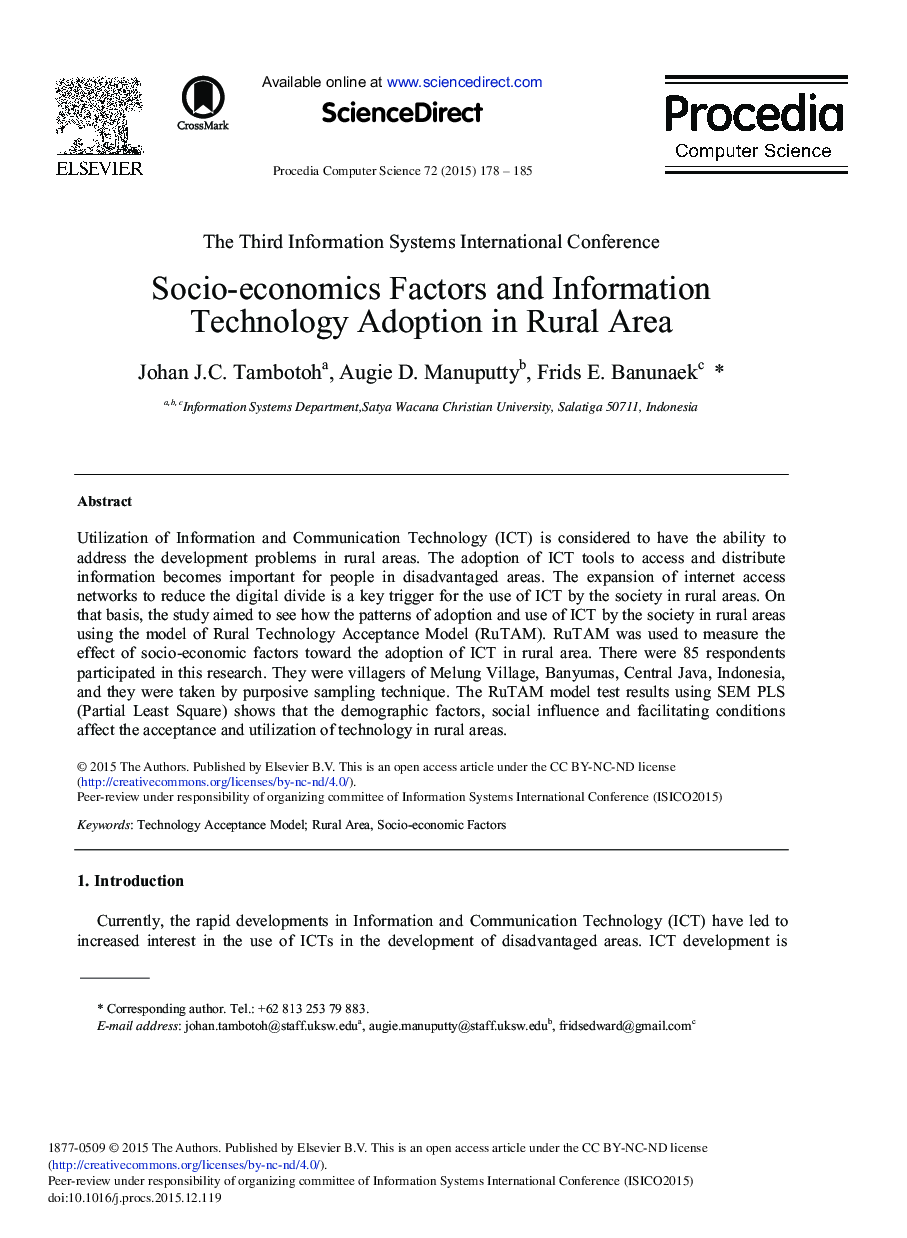| Article ID | Journal | Published Year | Pages | File Type |
|---|---|---|---|---|
| 487120 | Procedia Computer Science | 2015 | 8 Pages |
Utilization of Information and Communication Technology (ICT) is considered to have the ability to address the development problems in rural areas. The adoption of ICT tools to access and distribute information becomes important for people in disadvantaged areas. The expansion of internet access networks to reduce the digital divide is a key trigger for the use of ICT by the society in rural areas. On that basis, the study aimed to see how the patterns of adoption and use of ICT by the society in rural areas using the model of Rural Technology Acceptance Model (RuTAM). RuTAM was used to measure the effect of socio-economic factors toward the adoption of ICT in rural area. There were 85 respondents participated in this research. They were villagers of Melung Village, Banyumas, Central Java, Indonesia, and they were taken by purposive sampling technique. The RuTAM model test results using SEM PLS (Partial Least Square) shows that the demographic factors, social influence and facilitating conditions affect the acceptance and utilization of technology in rural areas.
